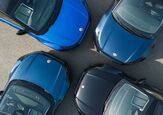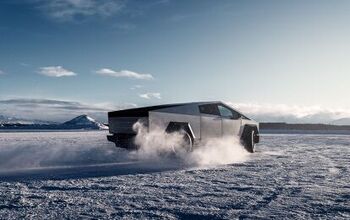QOTD: Many Happy Journeys?

By now you’ve heard, been told, or simply noticed that the Dodge lineup for 2021 contains but three models: the Charger, Challenger, and Durango. A trifecta of AARP members, now endowed with as much horsepower as Fiat Chrysler could rustle up from its deep parts bin.
Gone for ’21, but hardly forgotten, is the Grand Caravan, a pioneer of the minivan segment and a stalwart Dodge model seemingly immune to inflation. We knew its demise was coming. Same goes for the other model axed for 2021 — the Dodge Journey — though the discontinuation of this vehicle isn’t nearly as likely to elicit tearful, glowing eulogies at the wake.
Perhaps you’d like to say a few words?
Yours truly had no reason to own or drive a Journey, but a friend and a family member both did. Let’s just say that their ownership experiences wouldn’t provide much in the way of useful fodder for Fiat Chrysler’s marketing team.
A smallish midsize crossover, the Journey, throughout its lifetime, offered buyers decent family and cargo capacity for very little money. In base, front-drive guise, a driver could close his or her eyes and be transported back in time, and not in a good way. Despite soldiering on, almost unchanged, from the 2009 model year to 2020, the vehicle’s DaimlerChrysler-Mitsubishi platform and base 2.4-liter World engine was straight out of the first term of the G.W. Bush administration.
The entry-level four-speed automatic transmission debuted in 1989, back when another Bush occupied the Oval office.
And yet you could pick up a new Journey for a song, something many buyers chose to do. Sales topped the six-figure mark in the U.S. in 2015 and 2016, and last year’s tally was still a respectable 74,686 units. Not bad for a model paid off long ago.
Also last year, a 2015 Journey purchased new by a relative for a jaw-droppingly low price was already showing its age. Rust arrived at the party unfashionably early, and your author could have poked his finger through its corroded, leaking oil pan, had he chosen to do so. Thankfully, that vehicle is no longer in the person’s possession.
Another base Journey entered my friend’s driveway some time ago, though the Magic of Journey meant that this friend soon traded it in for an uplevel 3.6-liter model for a lower monthly payment. One day, after his son went to retrieve a hat from the front seat, a not-too-harshly-slammed door caused the rear window to explode. It’s still in his possession, as the Pentastar engine has more things going for it than the vehicle itself.
It also paid itself off pretty damn quickly.
While the Journey might stage a reappearance in the near future, possibly underpinned by a platform sourced from some sporty Italians, the unchanging model we’ve come to accept as part of the automotive landscape is due to depart. So, as we gather today to remember our brother, the Journey, is there anyone here who would like to speak about its time spent with us? Any stories you’d like to share?
[Image: Fiat Chrysler Automobiles]

More by Steph Willems
Latest Car Reviews
Read moreLatest Product Reviews
Read moreRecent Comments
- 28-Cars-Later Actually pretty appealing (apparently I'm doing this now). On a similar note, a friend of mine had a difficult situation with a tenant which led to eviction and apparently the tenant has abandoned a 2007 Jag S-Type with unknown miles in the garage so he called me for an opinion. Before checking I said $2-3 max, low and behold I'm just that good with the 3.0L clocking in at $2,3 on average (oddly the 4.2 V8 version only pulls $2,9ish) and S-Types after MY05 are supposedly decent.
- DO I have owned a 2012 LR4 since day one and it has been the best vehicle I have ever had the pleasure of having in the garage. I know how easy it is to hate on Land Rover but this LR4 is comfortable, has a ton of storage room and is so versatile. With 110k miles, mine is now relegated to ‘other’ car use but is still the go to for off road adventures and snow runs. Nice to see one featured here - I think they are so underrated.
- Tane94 I'd be curious to know whether 87 octane is no longer the most popular grade of gasoline by sales volume. My Costco often runs out of Premium grade and I suspect 93 octane might now be the most popular grade of gas. Paying 40-50 cents more per gallon 87 vs 93 octane because of turbo engines is the real story
- Redapple2 125 large? You re getting into 911 territory.
- Redapple2 Industry worst quality prevents any serious consideration. I ll take an Evil gm Vampire Denali first.


































Comments
Join the conversation
Hardly a surprise. When the Journey's powertrain choices wee culled down to the 4 banger and 4 speed trans, and FCA announced layoffs at the trans plant because they were dropping the trans, the end was obviously here. I have never believed the chatter about a Stelvio based Journey. fwiw, I don't believe the chatter about a Giulia based Charger either. Now that they have officially stuck a fork in the Journey, lets see if they follow the Steve Plan: -replace the current, non-grand Cherokee with the Commander and Grand Commander: fresh styling and upgraded interior with the two row Commander replacing the non-grand Cherokee and the 3 row Grand Commander replacing the Journey. -with production capacity at Toluca freed up by replacing the Journey with the Belvidere built Grand Commander, drop the Italian built Renegade, because Toluca will be able to build enough Compasses to replace all the Renegades sold in North America, along with filling existing Compass demand. -with the non-grand Cherokee name freed up by it's replacement by the Commander, the replacement for the current 2 row Grand Cherokee can be simply the Cherokee, while the new 3 row that is supposed to be built at Mack Ave will be the Grand Cherokee, which will replace the current Durango. And there you have the Steve plan to make all FCA SUVs Jeeps.
We had the FIAT variant, 7 Seats, tri zone climate control. 6 speed 2.4. The best aspects? The family-friendly interior, storage space, booster seats easy exit and entry. The worst aspects, FCA/Dealers. Ultimately sold it. Why? No flair just wasn't singing for me anymore. I would still recommend one to anybody who carts around a lot of kids. Bought a HAVAL H9............